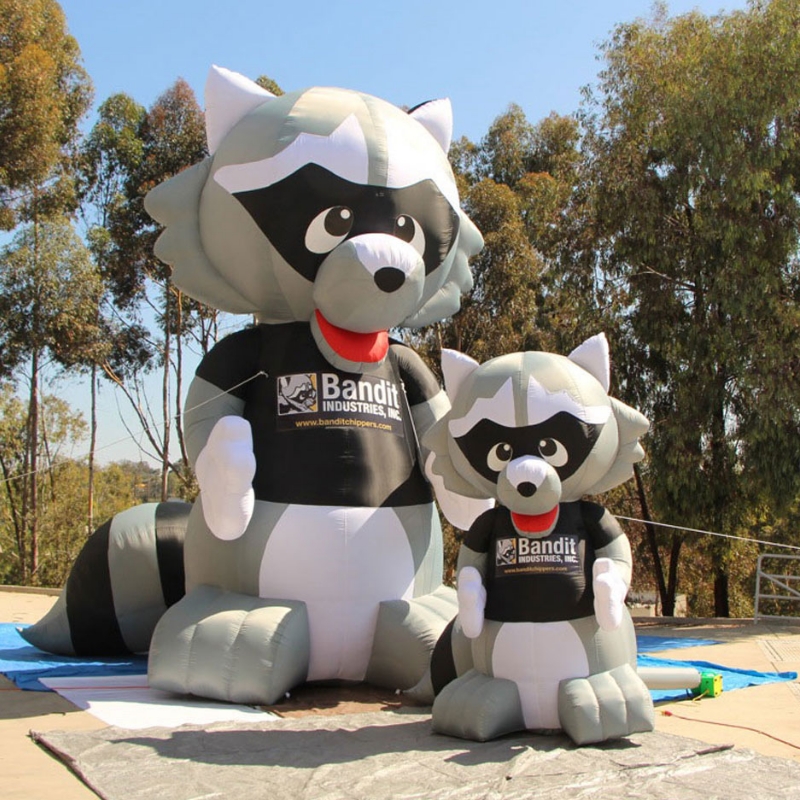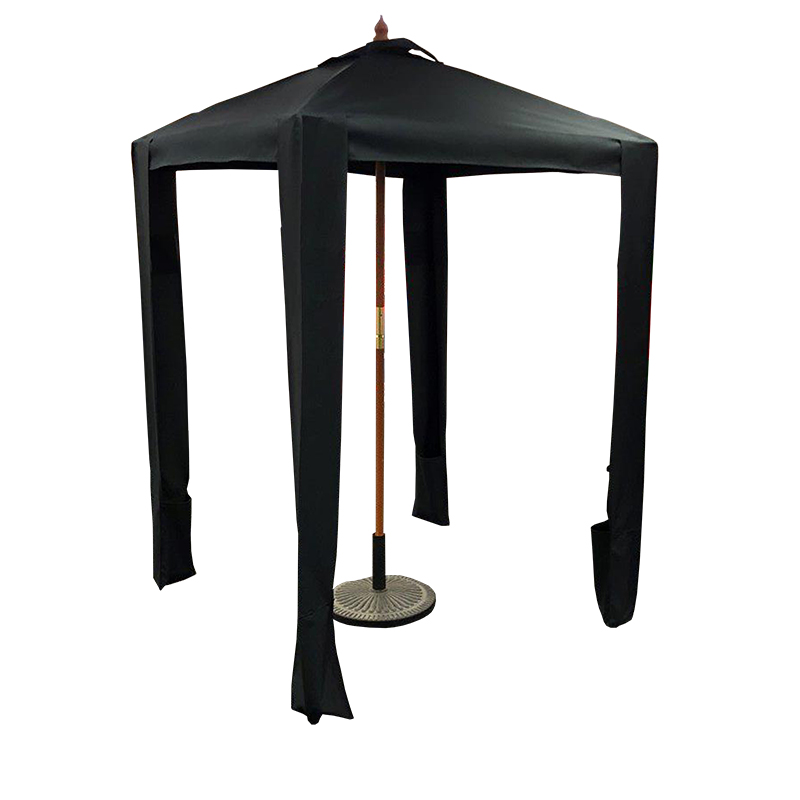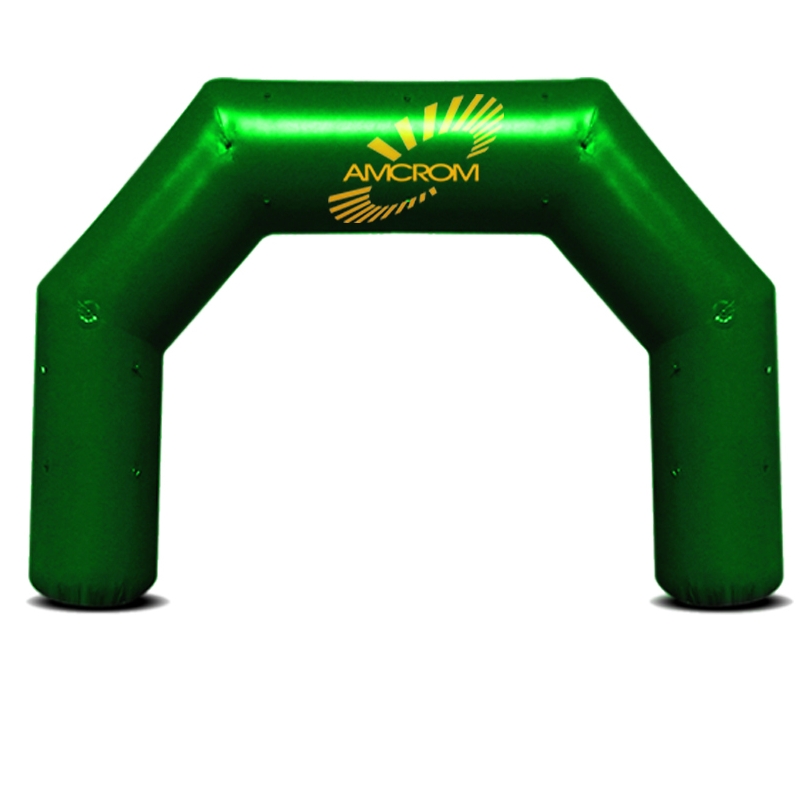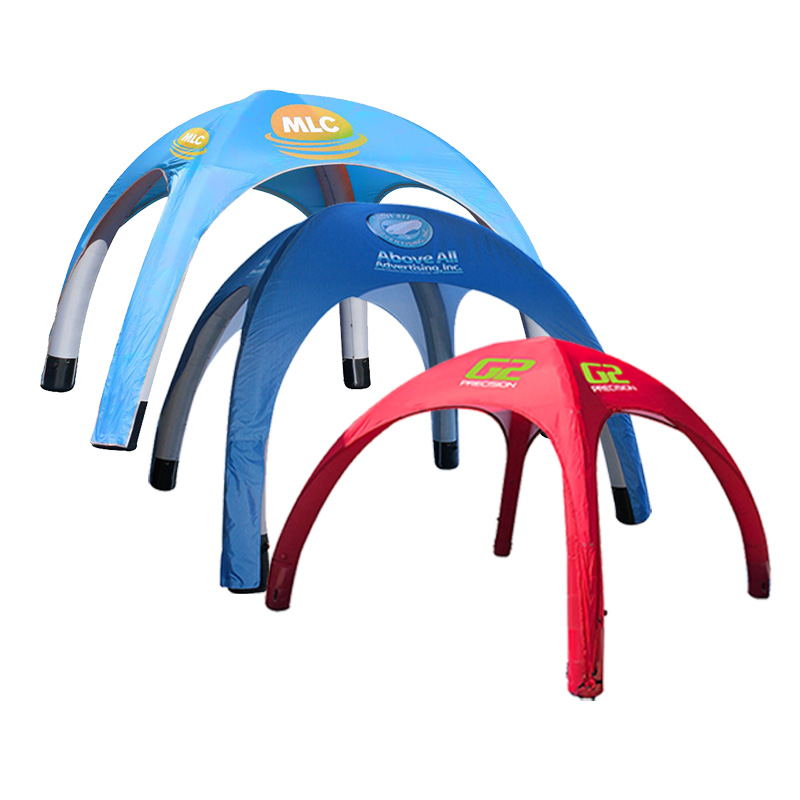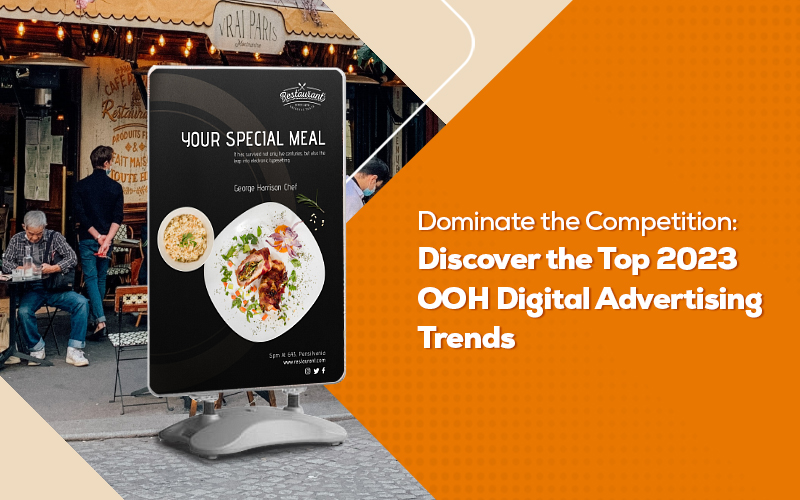Dominate the Competition: Discover the Top 2023 OOH Digital Advertising Trends
Did you know? The digital out-of-home market was valued at USD 14.2 billion in 2017 and is expected to reach USD 26.2 billion by 2023, at a CAGR of 10.7% during the forecast period.
Given that there are approximately 8 billion people on the earth, one could assume that simply airing an advertisement is sufficient. The opposite is true and could not be more so. Each year, advertising trends change, and several elements play a role in this. Only a handful of them include preference changes and the development of new technology. A lot of uncertainties lie ahead when you factor in the global Coronavirus epidemic that occurred in late 2019 and reduced advertising spending.
Along with the advancement of technology, advertising has always changed. From the newspaper to mobile targeted ads, from the papyrus sales message of the Egyptian. It has unquestionably made progress.
The primary goals of advertising have not changed despite the difficulties that lie ahead. This entails educating, persuading, and reminding clients about a particular brand and its advantages. The only thing that has changed is that because of the pandemic, marketers must be extremely nimble in the future when putting advertising tactics into practice.
Personalized Advertising

Buy Custom Printed Inflatable Spider Tent
Although this isn't a new trend, it is one that will undoubtedly gain momentum over time. This is due to the fact that there are more and more ways to discover what the customers desire. This covers tracking of links that have been clicked, consumer behavior, past purchases, survey results, and more.
Any of the customer experience management software packages would be your go-to tool if you work in the customer care industry. On the other hand, decision-makers would want the more generic tools, business intelligence software.
Businesses are now attempting a more human-centered strategy. As a result, adverts will now be designed to target real people using their email addresses and other information from registered users. With more information at their disposal, marketers can make clients a better offer that will almost certainly result in sales.
There are many different types of advertising that can be used for targeted marketing. It may be used with just about any format, including print, video, social media, TV, and displays. This provides advertisers with a wide range of choices for ensuring that only relevant people see their advertising.
It's important to determine who to display a certain advertisement to and when to do so. When it comes to it, there are various methods. This covers, among other things, display targeting, geofencing, database marketing, and search engine advertising (SEA).
Database marketing is focused on gathering pertinent client data and turning it into knowledge that can be put to use. SEA makes use of search engines to give companies the chance to rank higher in natural search results. On the other side, geofencing enables real-time user targeting depending on their current position. Finally, display targeting targets users with highly relevant display adverts by taking into consideration their interests and past keyword usage.
Mobile-First Advertising
Just one year ago, mobile devices accounted for more than half of all global online traffic. 70% of people worldwide now use smartphones as a result of COVID-19 (Statista, 2020). During stay-at-home advisories and national lockdowns, the majority of customers spent a sizable amount of time browsing, buying, and having fun on their phones. As a result, businesses decided to make the switch to mobile-friendly services, websites, and marketing.
Almost all market trends for digital advertising have been impacted by this. For instance, the majority of videos today are shot with the subject standing up, creating what is known as a vertical video. That's because smartphone viewing works best in a vertical format. As a result, they are more likely to engage smartphone users.
Stories, which made Snapchat so popular, are also huge trends on Facebook and Instagram as well. They are mostly promoted for mobile phones even if they do function on desktop computers. As a result, advertisers began releasing advertisements in the guise of stories.
Since Instagram stories are ideal for business branding, this is particularly true of them. This is demonstrated by the fact that brands are responsible for 33% of the most popular Instagram stories (Search Engine Journal, 2019). It only got bigger with the addition of technology that allows the advertisement to be inserted directly within tales.
Display Advertising
Visual advertisements utilizing ad banners are typically referred to as display advertising. It is available in a huge range of sizes and shapes. Additionally, the banners can be used on a variety of channel types, including blogs, video hosting services, apps, social media, etc.
Spray-and-pray marketing was once the ineffective approach utilized in this field. Before, users who see a banner don't have any interest in the information at all. But since the introduction of the targeting possibilities, it has taken center stage in the advertising industry.
Display advertising trends have seen an astounding assortment of innovations just in the last few years. It first enabled marketers to focus on consumer-used terms. It was then able to gather pertinent data about the users and their interests.
Remarketing refers to contacting website visitors who have already visited the site and for whom some known information is available. Marketers can utilize this data to tailor their messages or content to the interests of their target audiences. Profit is the next phase.
The inclusion of videos in the banners is a further expanding trend in display advertising. In-banner films significantly boost client engagement when compared to more conventional ones, according to some supporting research. Display advertising with embedded videos provides an 18.4% better CTR, claims Banner flow.
Print Advertising
To start, print advertising is still relevant today. It has been acting covertly to develop in order to keep up with the digital world. However, its dependability remained one of its defining characteristics, which made it a powerful tool.
Consider a time when you read in a newspaper about a famous person's passing. You'll immediately think of sadness and pity. On the other hand, when reading online, the typical initial thought is "another fake!" That is one of the main variations that make print advertising trends remain interesting to research.
Businesses are starting to understand the advantages of investing in the print industry, which is the key factor contributing to its recent growth. As long as they are not bills, it is now more exciting to fill up a physical mailbox. That's because subscription emails and junk mail are frequently included in our emails.
The human desire for tactile experiences is another fascinating factor that keeps print media popular. Since the advent of the digital world, this is now more true than ever. Something that can be touched gives off a comfortable feeling that its digital counterpart cannot. Therefore, something concrete like print media is a terrific method to engage your audience and establish credibility.
Growth in Advertising Opportunities
Digital outdoor advertisements, in particular, have a wider range of placement options thanks to recent technological advancements. In crowded public locations like airports, waiting areas, public transportation, and playgrounds, advertisers are adopting smaller advertisements rather than giant billboards to promote their products. Since blank walls may be utilized to project advertisements, they have also become a viable alternative to conventional billboard advertising.
According to a KMPG advertising analysis, outdoor advertising is expected to expand dramatically in 2019 thanks in large part to advertising outside airports. It has a 27% revenue share and is probably going to increase in 2023.
Brands are Embracing the Power of Storytelling
The human mind is programmed to retain information and viewpoints presented in a narrative. Customers remember events and retain information better when told a story. For instance, a new brand of toothpaste that does not set itself out from the competition will be difficult to recall; nevertheless, offering the same toothpaste in the form of an engaging tale is likely to elicit interest. If the advertisement is narrated vividly, any company with a compelling story to tie to its context is likely to have an unconscious impact.
Experts predict that in 2023, this narrative tendency will become much more prevalent. By creating ads that only tell a portion of the tale and keeping the audience waiting for the subsequent ads in the storyline, outdoor advertising is adopting this tactic.
Recently, there has been a lot of discussion on what makes for an effective narrative. Making a tale character is one of these features. The protagonist in this story encounters a challenge and looks for a solution. In the end, the brand solves the issue and saves the day.
Brands must focus closely on coming up with innovative and original ideas for storytelling. This will increase viewer interaction with the ads. Simply publishing a story is insufficient. Before the consumer can unconsciously trust the tale, they must be able to relate to it in a real way.




